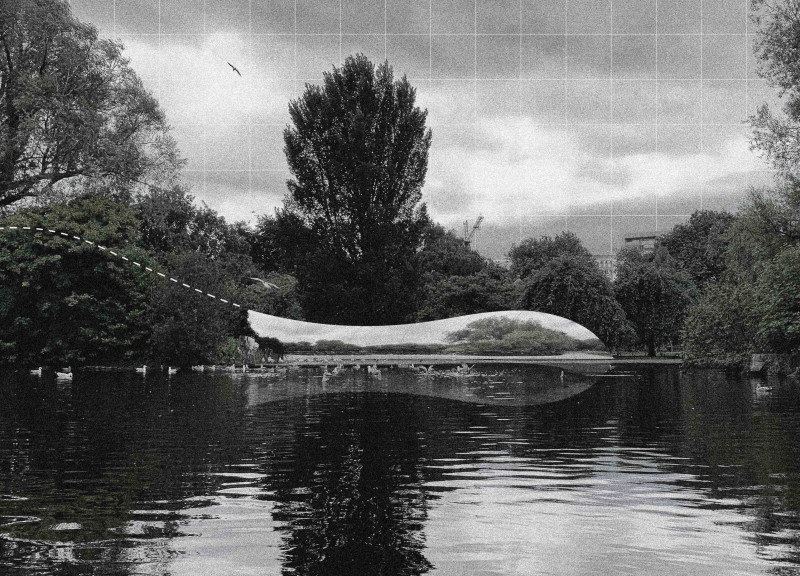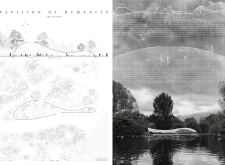5 key facts about this project
The Pavilion of Humanity, known as the Oculus, is located in a public city park. It is designed to offer a unique experience, allowing visitors to observe the surrounding environment from a private space. The concept focuses on passive engagement with nature, enabling people to connect with their surroundings without physically interacting with them. The pavilion’s design encourages reflection and observation in a tranquil setting.
Design Configuration
The Oculus is laid out in two distinct areas joined by a narrow corridor that resembles a bottle-neck. This arrangement effectively creates a smaller viewing space for enjoying the landscape, while a larger section is designated for presentations. The different areas support a variety of activities, making the pavilion versatile and inviting. This thoughtful arrangement fosters interaction among visitors and enhances their experience of the park.
Materiality and Structural Form
Constructed entirely of self-supporting one-way glass, the pavilion provides clear views of the outside while maintaining privacy for its occupants. Instead of using a traditional foundation slab, the design features a ring foundation that outlines where the glass meets the ground. This allows grass and plants to thrive inside, establishing a connection between the built and natural environments. The design makes it appear as if the pavilion belongs to the park.
Environmental Considerations
Two large openings are present at the top of each dome, allowing for natural ventilation. These features enhance air flow and comfort within the space, showing a commitment to environmental design. By letting fresh air flow in, the pavilion blends harmoniously with its surroundings, making visitors feel connected to both the inside and outside.
A multifunctional space, the pavilion can adapt to future uses, such as serving as a café. Its design encourages various activities while fostering a sense of community. The shifting light throughout the day plays across the glass surfaces, creating a changing atmosphere that captures the essence of the park.




















































